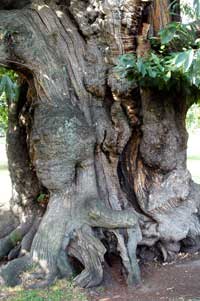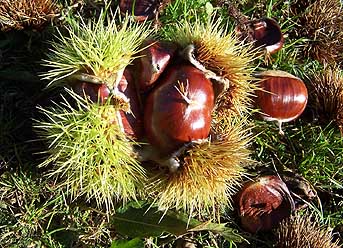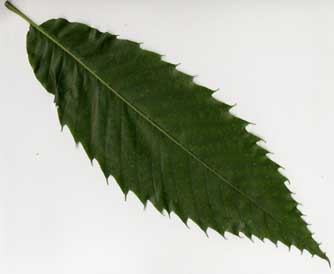Sweet Chestnut
The sweet chestnut belongs to the same family as the oaks and beeches (the Fagaceae). The leaves on a mature tree can be very long, possibly bigger than the leaves of any other woodland tree in the UK. The Sweet Chestnut was planted in large quantities in south east England (for charcoal manufacture). It was often coppiced and the poles used for stakes, gateposts, posts and fencing. May occur as an understory to Oak.
Leaf
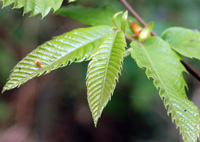
Simple leaves are arranged alternately along the shoot / twig. The leaves are long (up to 20cm in mature trees) with prominent veins and a pointed tip. The edge of the leaf is noticeably serrated, a bit like teeth on a saw. The leaves when mature have a dark green colour. Young leaves may have hairs on the lower surface.
Buds, Bark & Stem
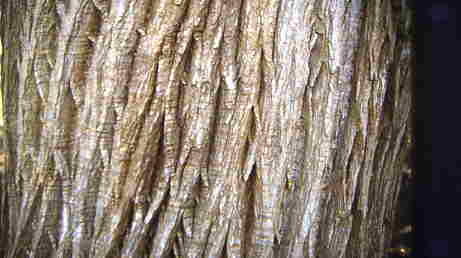
The bark on young trees is a dull silvery purple, with vertical cracks. Spiral fissures may develop on old trunks; the bark is brown. The buds alternate on young shoots and white lenticels (breathing pores) may also be seen.
Flowers and Fruits
A sweet chestnut in flower may not be as impressive as a horse chestnut but it does have a rather distinctive smell. The trees flower relatively late in June / July. The male flowers are long, yellow 'tassels'. Female flowers are green rosettes. The flowers offer a source of nectar and pollen for bees and other pollinators. After pollination and fertilisation, and later in the year, a prickly, leathery casing forms containing the nuts. The nuts when roasted are edible.
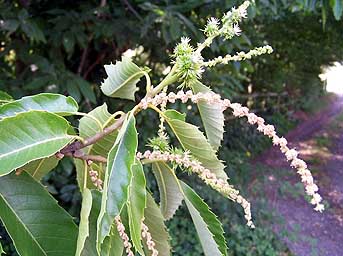
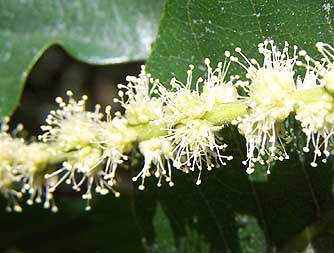
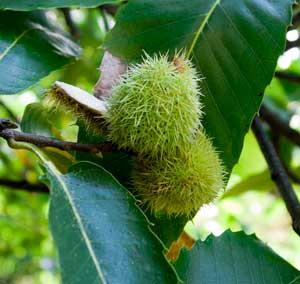
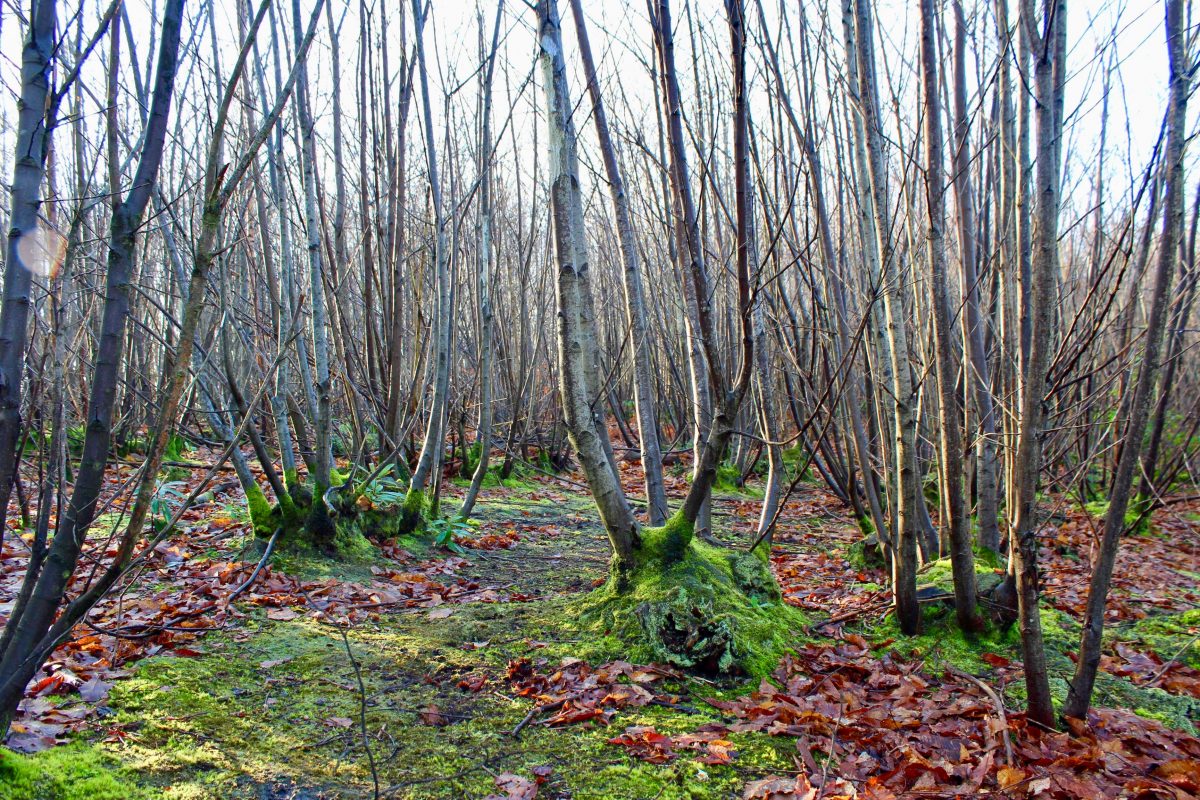
The sweet chestnut is native to Southern Europe and western Asia. It is probably an introduction to this country, with some claiming it was brought here by the Romans. Nowadays, it is found throughout woodlands and copses in the UK, more often in southern England where areas of coppiced sweet chestnut are to be seen.
